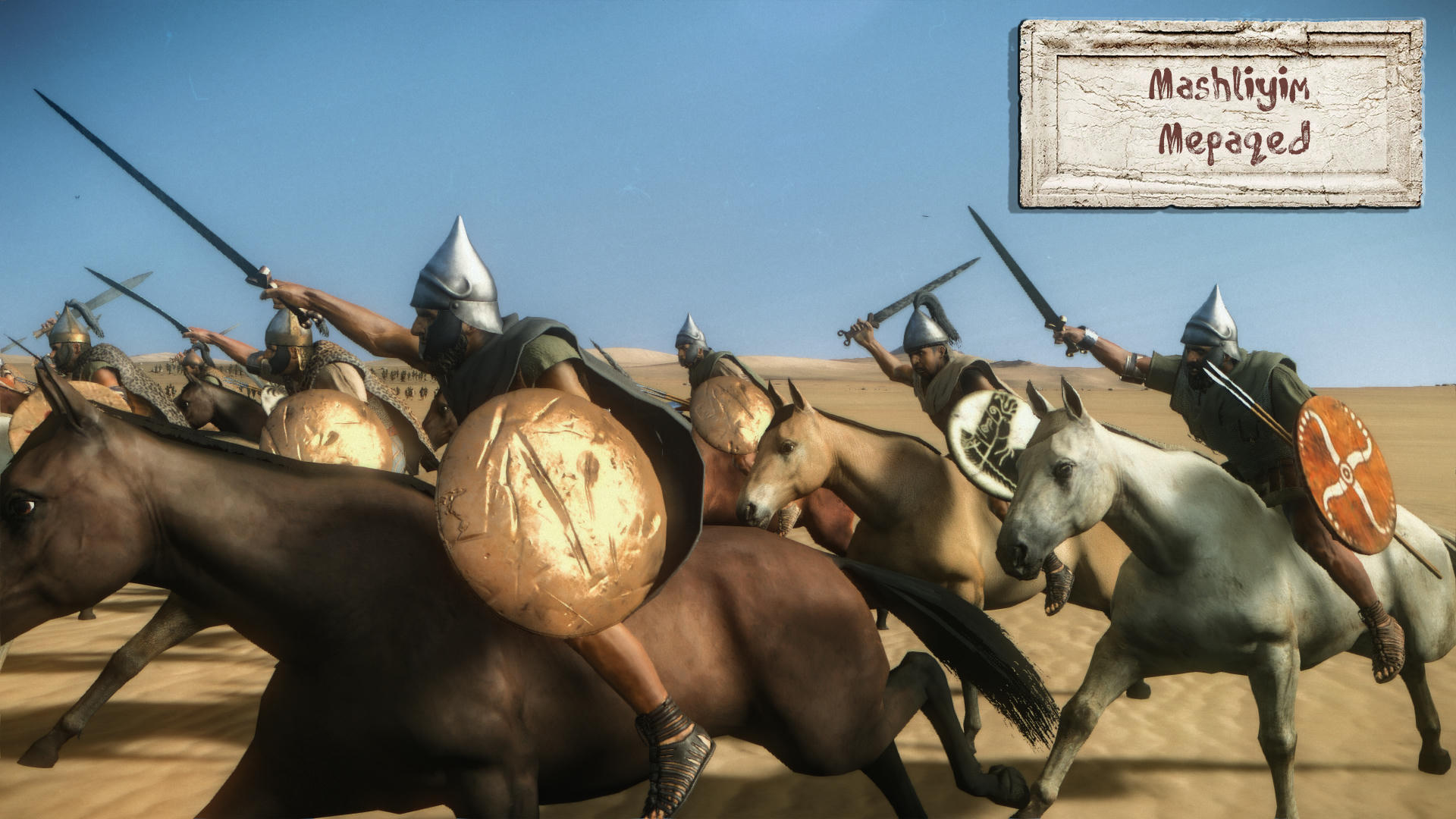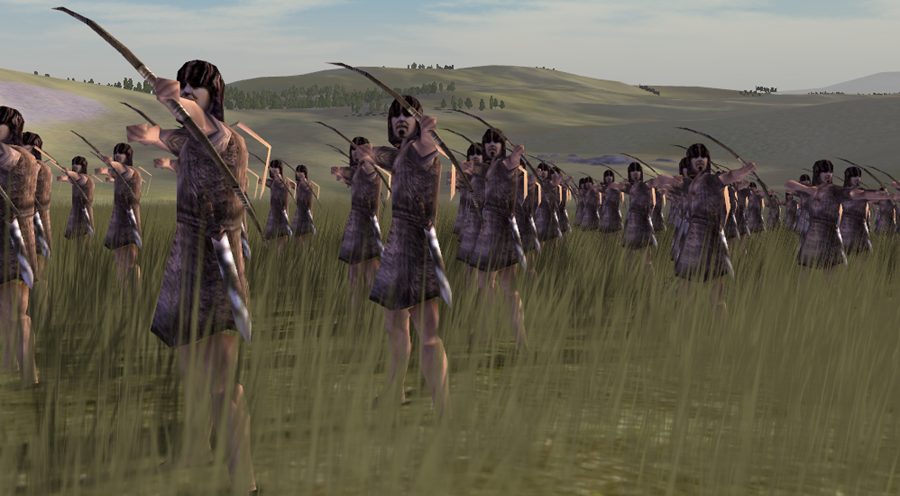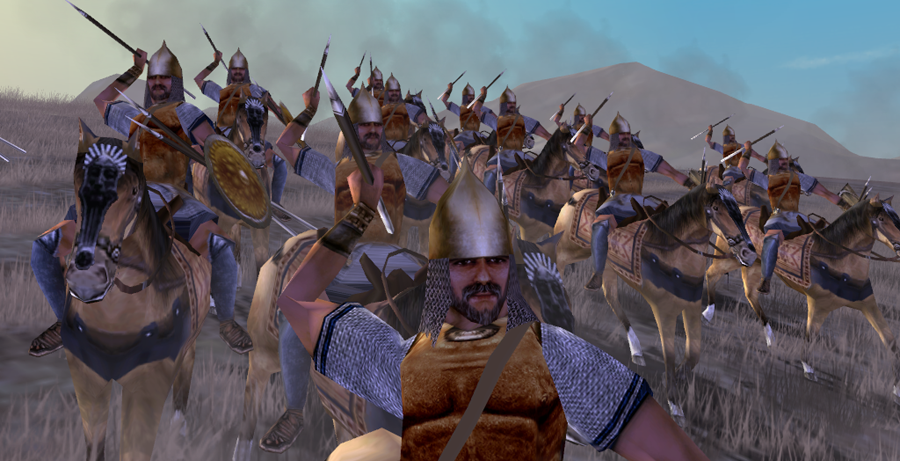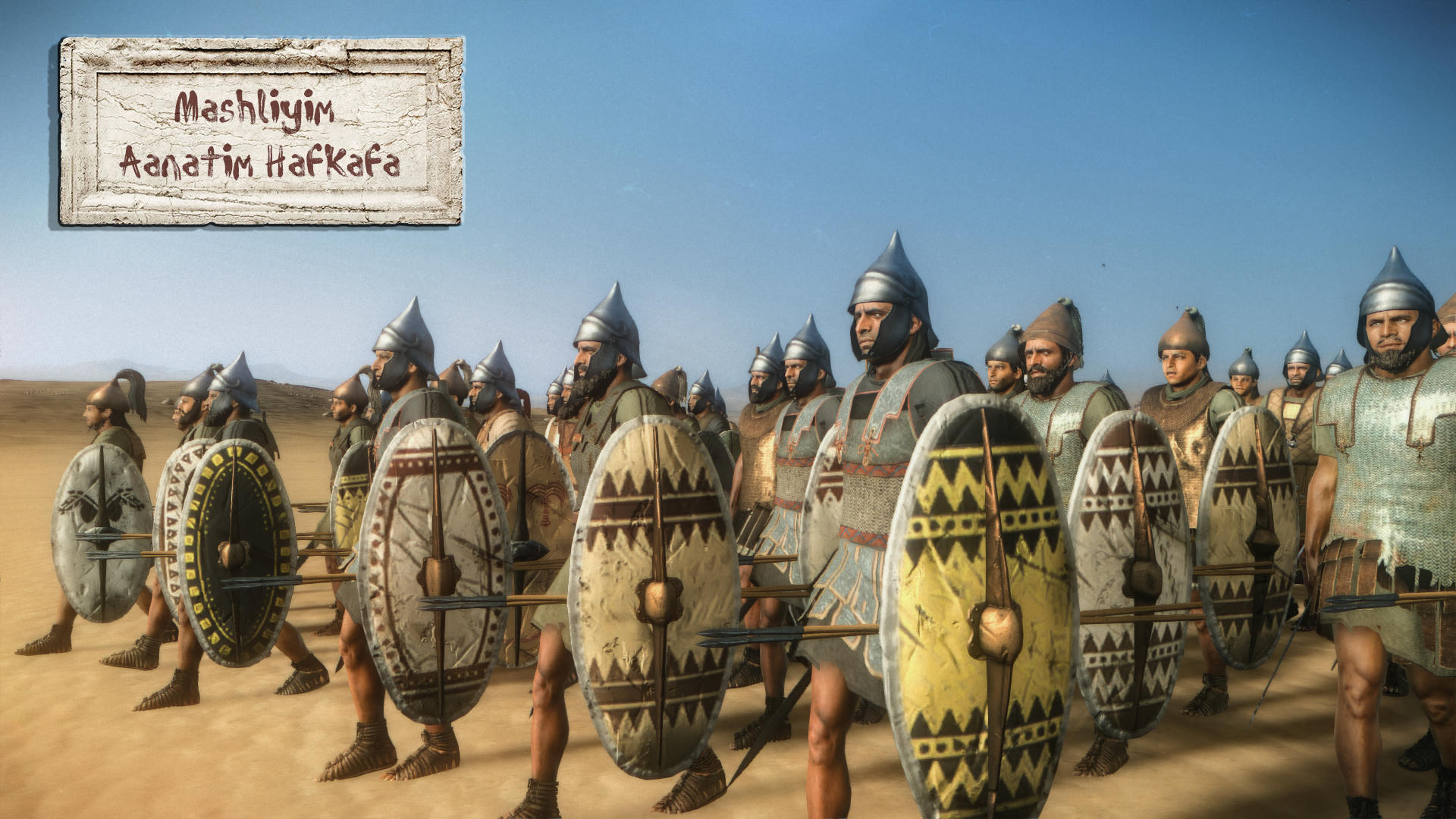
A web patchwork of references about Numidian warriors.
About ancient berbers
North Africa is like a separated continent from Africa. Populations is white (more so in Kabylie, Algeria), the climate is Mediterranean and mild, and the culture became Arabic under the Islamic conquest. The region was a known hotbed of pirates and corsairs in what was called "barbary" in the north before European powers (An a Young America - see the Tripoli action) decided to intervene, ultimately colonizing the area in the 1820-30s, which took back its independance in the 1960s. The Atlas mountains are like a natural barrier before an immense sea of sand -The Sahara- separating these lands from Equatorial Black Africa. There has been ten thousand civilizations in this continent stretched north to south, yet we know in the "West" very little about these, but Egypt and from there, the Nubians.But there were mighty empires worthy of Rome in the medieval era, like the Mandingue or Mali Empire, probably one of the largest, and many ancient city states ruling immense areas, like Timbuktu at the gates of the desert. But for what we know from ancient history, Greeks and Latin authors mostly spoke about these peoples beyond the known civilizations of Carthage, Egypt, Libya and Numidia -those bordering the Mediterranean- under the generic term of "Aethiopians" (Herodotus) and "Nubians". But there was no such things as the "Nubian Kingdom" but the high nile Kingdoms of Kush, Meroe and the land of Punt. Apart these, ancient Sarahian tribes called the Garamantians from beyond the mountains inhabited Sahara, whereas to the north-west dwelled the Mauri (nowadays Morocco), the Numidians in today's Algeria and Tunisia and the Gaetuli further south.
The Numdians were the best known of these peoples, because of their link with the Carthaginians: They formed a large part of Punic mercenaries, both on foot and mounted, forging a reputation of master skirmishers and soldiering from Spain to Italy. This was also due thanks to the structure society organized around city-states which dotted the landscape such as Cirta (the eastern capital of Massylii Numdians), Siga for the western Masaesyli but also Auzia, Styfilis, Thamugadi, Lambaesis, Theveste, Thelepta and Capsa. Little has survived about this civilization, made of numerous smaller tribes in a confederation, dominated by the towering figures of kings and their scholars.

About The Massyli
The Massylii or Maesulians inhabited eastern Numidia, and amalgamated up to the 4th century BC into a coherent territory. They chosed a king and shared their western frontier were Masaesyli. They akso shared theior northern and estern borders with the rich and powerful Carthaginian Republic. It seemed they were assimilated to a protectorate, Carthage maintaining this dominance though diplomatic manoeuvering and balance of powers between local tribal rivalries. The principal towns of the Massylii were Cirta, Tebessa and Thugga were the main city-states dominating the lands.
Scipio at the deathbed of Massinissa.
During the Second Punic War from 218 BC, both the Massylii and the Masaesyli were allied to the Carthaginian. They supported Hannibal in Iberia and Italy. However in 206 BC, Massylian prince Masinissa defected to the Romans and the latter backed him after defeating the Carthaginians in 202 BC. Massinissa was therefore as a rewards, able to amalgamate the Massylii and the Masaesyli into a single Kingdom. He would rule until his death in approximately 148 BC, and was instrumental in the Third Punic War (149–146 BC). He was still leading his armies at the venerable age of 90 and is now seen as a funding father of the Berbers and a venerated figure, admired by the locals, the Latins and the Greek alike. Polybius made him one of the "greatest kings of our time". He was able also to develop the lands into his control, made the transition from a largely pastolralist culture into an agricultural powerhouse, especially with fruits and vegetables. Numidia under the Roman Empire became its propsperous and quiet "bread basket".
About The Masaesyli
Located in western numidia, not neighbours of the Mauritanians (Those of Massylii), The Masaesyli were the other important Berber tribe of Numidia, they bordered the Libyans. During the Second Punic War they initially supported the Roman Republic. Led by Syphax they fought against the Massylii led by Masinissa. The latter ambitioned to unite all Numidians in a confederacy against Rome and eventually the Masaesyli undertook the siege of Carthage. Syphax was defeated but spent the remainder of his days in Roman captivity, and eventually his people and kingdom was assimilated into the kingdom of Masinissa, namely "the Numidians".About Numdian warfare


 Numidian cavalry
Numidian cavalry
A depiction Numidian cavalry vs Roman equites during the 2nd punic war
The only constant depiction of Numidian warfare as it appeared during the Punic wars, is through Polybius, first and foremost, the most accurate (presumably) and trusted historian of the whole 60 years that saw Rome surging from a backwater position to the dominant power of the Mediterranean, subjugating Sicily, North Africa, Spain and Greece among others. The Numidians were revered as mounted skirmishers, first and foremost and the Numidian cavalry rose to fame during the numerous fights were they proved intrumental against a less skilled and arguably also less numerous Roman cavalry and Latin auxiliaries.
The lands were these cavalymen went from were tribal, and poor. We only have depictions of a light to medium cavalry at best. Skirmishing with the local breed of fast, small and nervous horses used by ancient berbers only allowed an equally light cavalryman to be effective. Numdians only had a tunic and their hairs were braided or treated in order to imitate something like an iroquois style hair dressing, plus tattooes, a dagger or short sword, a pelta style roundshield, and of course, javelins, either iron tipped for the elites, or cruder wooden javelins, hardened by fire. We have no depiction of nobles or elite, but it is likely the small tribal warbands were commanded by local chieftains and above them nobles related to the king, speaking Greek for better comprehension with the Carthaginian armies.

Numidian cavalry charging
We found no "numidian" attributed armor, so we can only guess the notables that were wealthy enough to have some armour has leather armor possibly with a metal pectoral, or could afford a bronze breastplate, a typical conical helmet of this region, or a greek helmet. But again, we only have depiction during the late Italian campaign of Hannibal of "veteran" amongst the Numidian horsemen, but no depiction of their equipment, which was probably much better from where they started. Additons probably included helmets like the popular Montefortino model, roman swords, spears, Roman-style armor or chainmail, although there are still strong evidence they kept their horses and still fight fast and agile. They rode without saddles or bridles, just a simple rope for directions, yet according to Polybius, move and fought in loose order "like a flock of bird", changing directions in an instant. The Iberian and Celtic cavalry also in service with Hannibal fought in close order with more heavy equipment, alternating charges and melee. The Romans fought in a similar way and therefore were disconcerted by the Numdian tactics. At Cannae, after drawing away and defeating the Roman cavalry the Numdians and allied cavalry were disciplined enough to to chase routed units but went back to fell on the Roman's rear, closing all hopes of escaping for the legions that were slaughtered there.
As a conclusion, is it safe to assume the Numidian light cavalry main tactic relied on harrassment, a bit like the Parthians, lobing their missiles then retreating before any contact could be made, avoiding melee combat. The battle of cannae was one of the few exception seeing Numidians fighting Roman infantry in a melee. They were the best units also for reconnaissance and intelligence. The link between Carthagiians and Numidians was however probably mostly related to loot and gages, since they are assimilated to mercenaries and also swapped sides during the second and third Punic war, to fight famously on the side of the Romans, and between them in that case, Masaesyli versus Massyli. Numidian infantry

Angus Mc Bride - Rome's enemies, famous depiction of a Numidian late infantryman, a Garamantian tribesmen and a Libyan horseman. The Numidian shows a remarkable mix of influences, Punic for the helmet, Roman for the chainmail and Hellenistic for the main weapon, a spear, the pteryges, and thureos shield. It was typical of Massinissa's late "Numdian legion" deployed during the 3rd Punic war.
The only Numidian infantry we know of was just a variant of the horse skimisher, a dismounted peltast. Style and equipment was similar. We do have some depiction of Numidian skismishers forging ahead during the crossing of the alps and as a screening unit on the hills of Italy. However there was probably an heaviest, more professional kind of infantry around the kind, acting either as dismounted heavy cavalry and acting as palace guards and/or crack unit. We have no mentions of Hoplites or any heavy infantry in the rather small cities of the Numidian Kingdom, however we know the armies of Massinissa were "romanized>" and counted professional units in numbers during the thord Punic war.

Sources/Read More
About CirtaAbout the Berbers
About Numidia
Google Books - Hannibals wars: A Military History of the Second Punic War by John Francis Lazenby
Ancient History: The numidians
♕ Aquitani & Vasci ♕ Celts ♕ Indo-greeks ♕ Veneti ♕ Yuezhi ♕ Indians ♕ Etruscans ♕ Numidians ♕ Samnites ♕ Judaean ♕ Ancient Chinese ♕ Corsico-Sardinians
⚔ Cingetos ⚔ Immortals ⚔ Cavaros ⚔ Cataphract ⚔ Romphaiorioi ⚔ Chalkaspidai ⚔ Devotio Warrior ⚔ Scythian Horse archer ⚔ The Ambactos ⚔ Iberian warfare ⚔ Illyrian warriors ⚔ Germanic spearmen ⚔ Carthaginian Hoplite ⚔ Thracian Peltast ⚔ Caetrati ⚔ Ensiferi ⚔ Hippakontistai ⚔ Hastati ⚔ Gaesatae ⚔ Cretan Archer ⚔ Thorakitai ⚔ Soldurii ⚔ Iphikrates ⚔ Kardaka ⚔ The thureophoroi